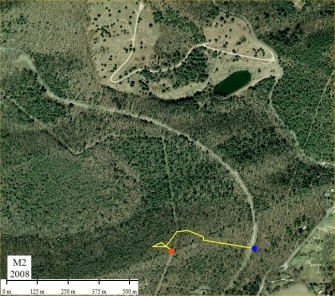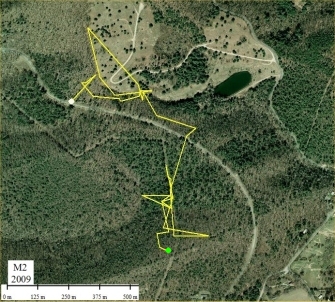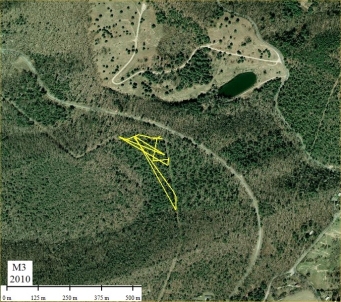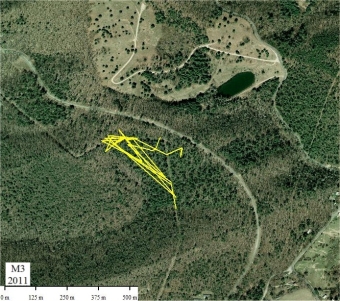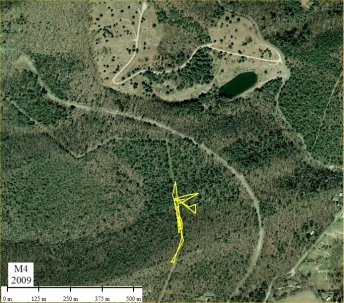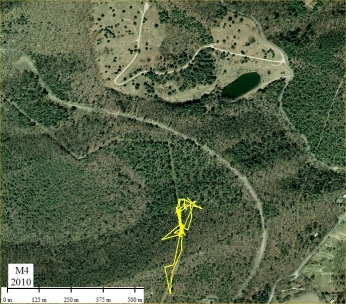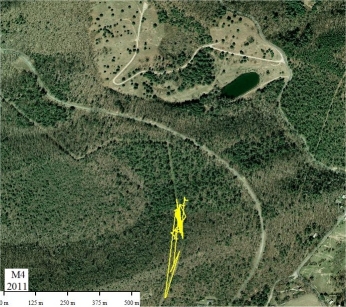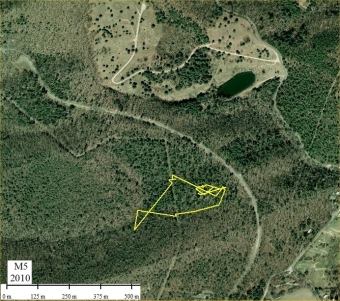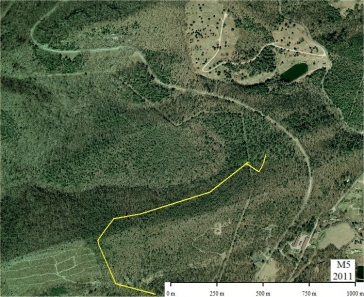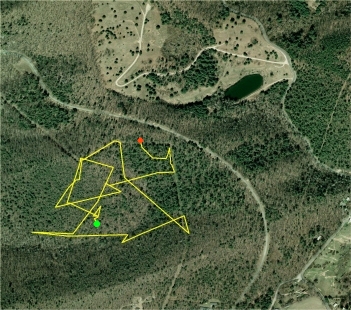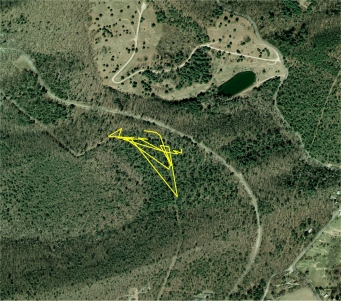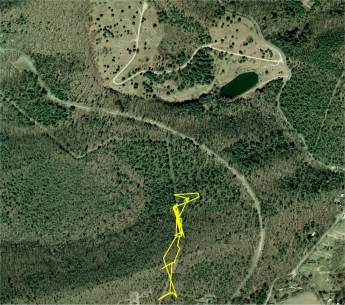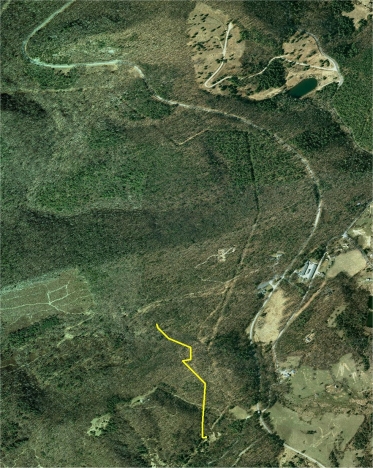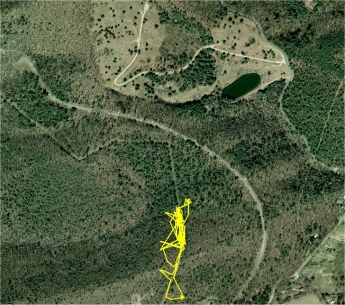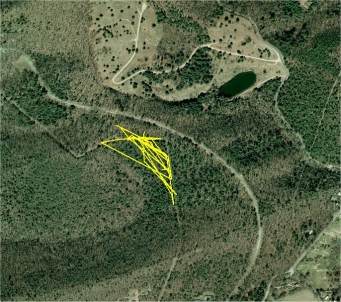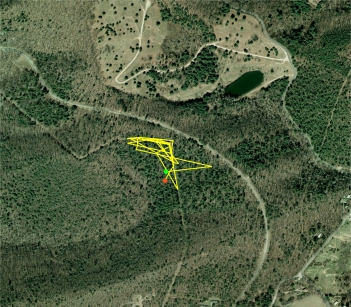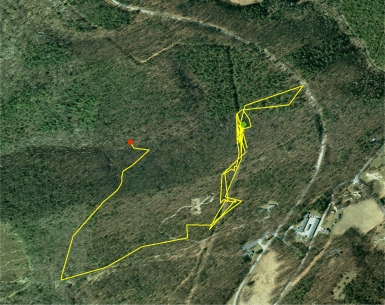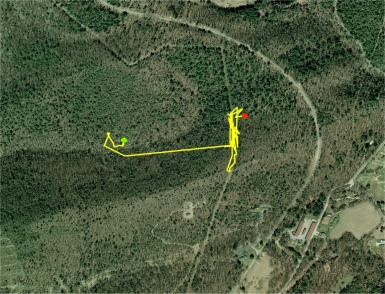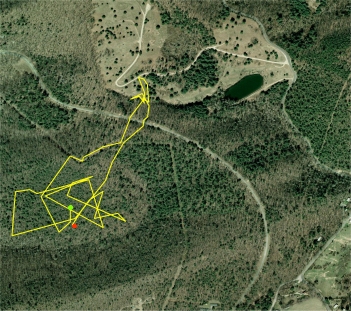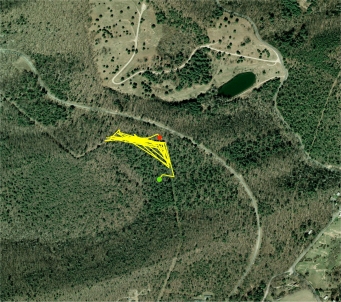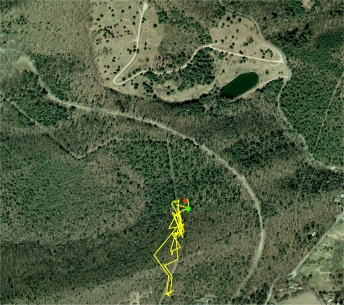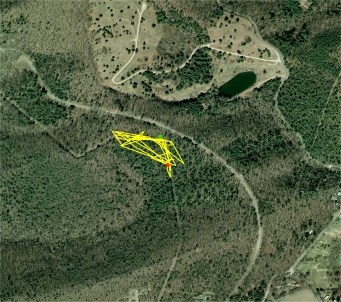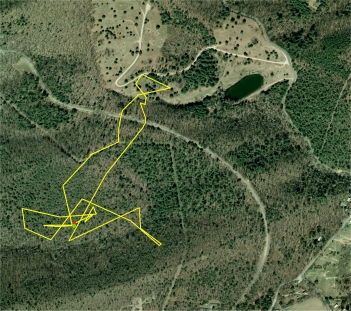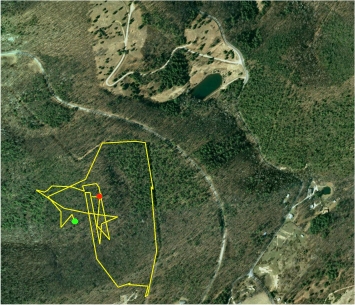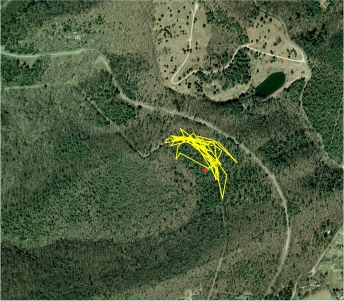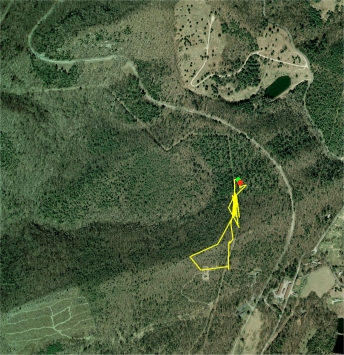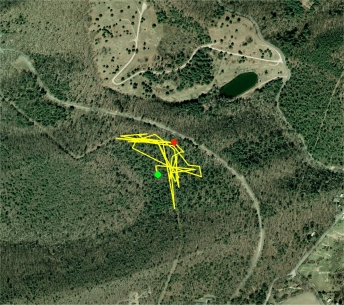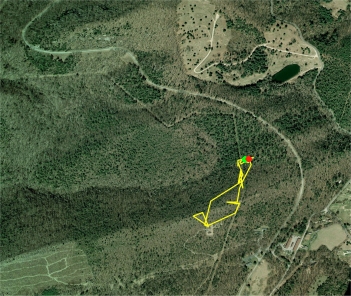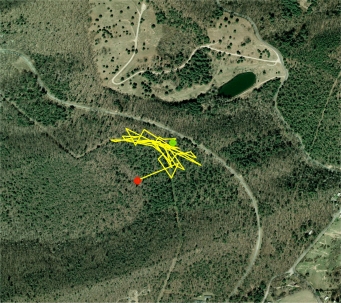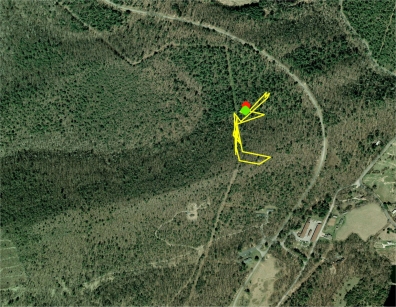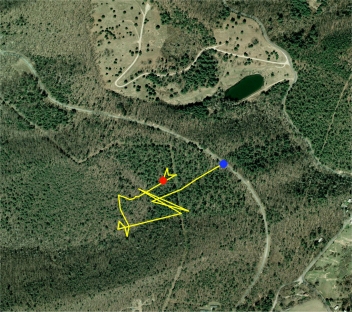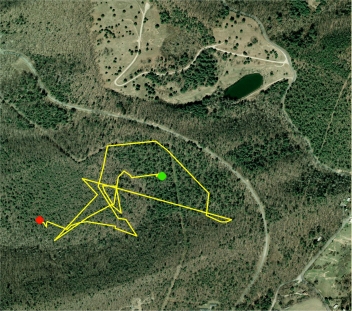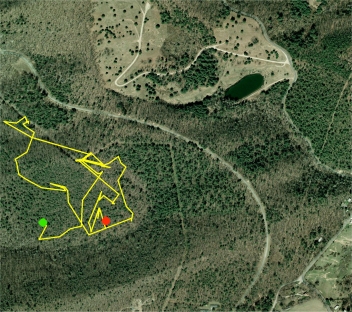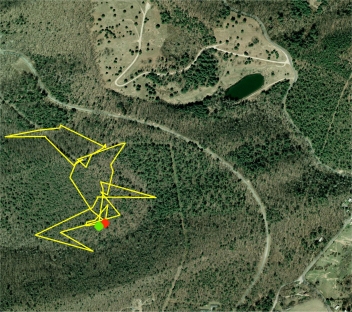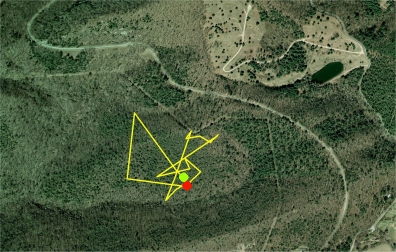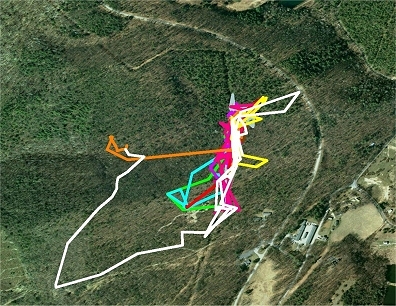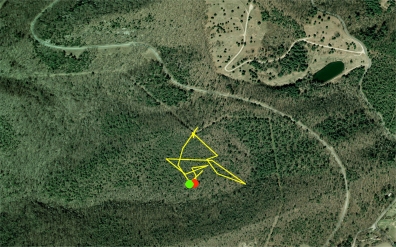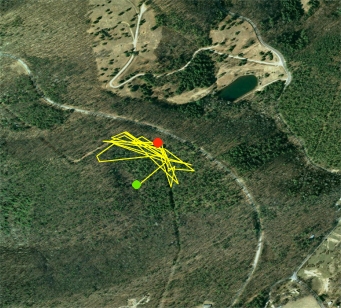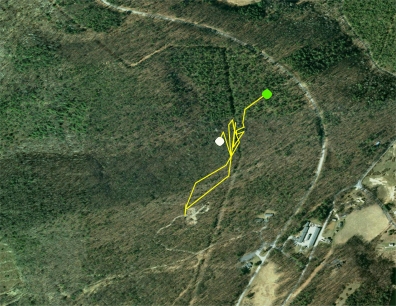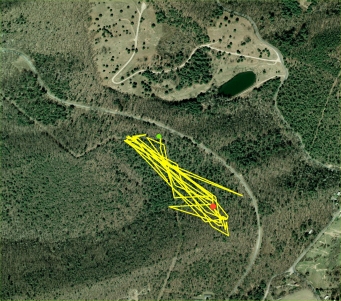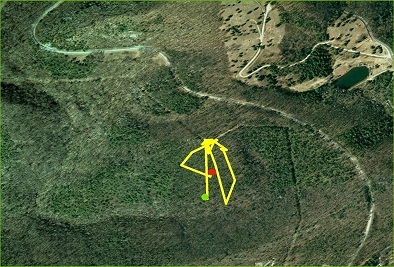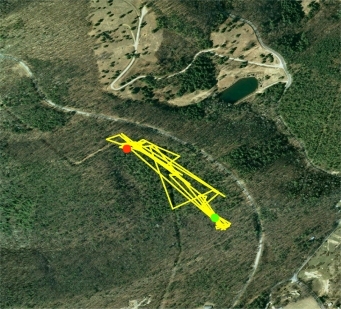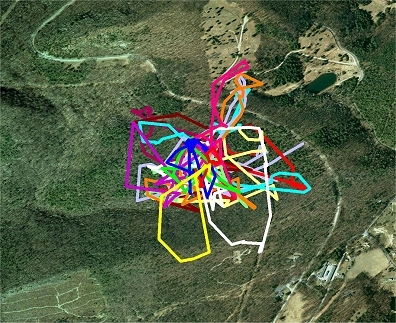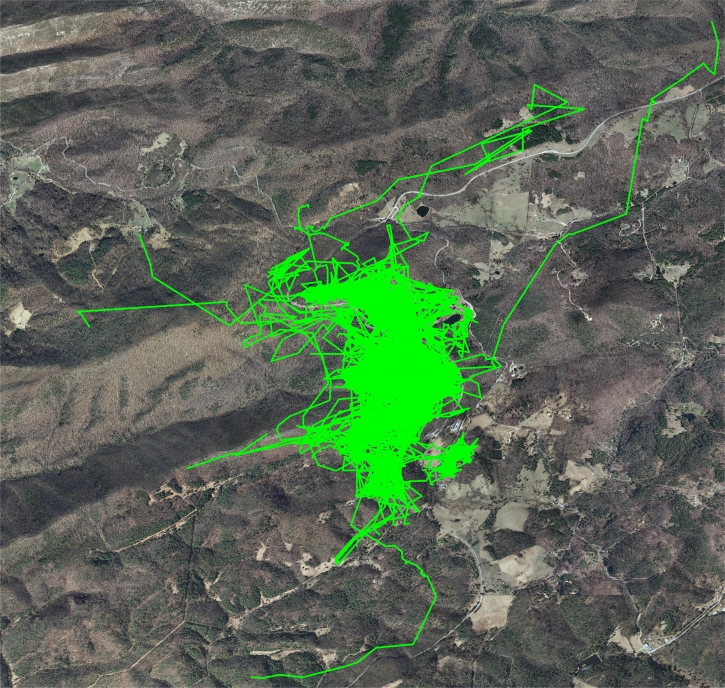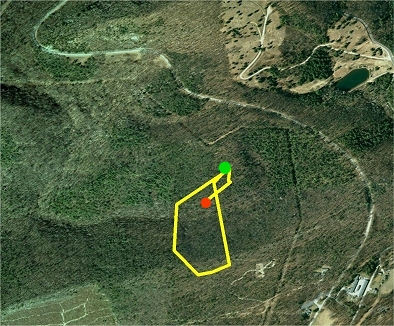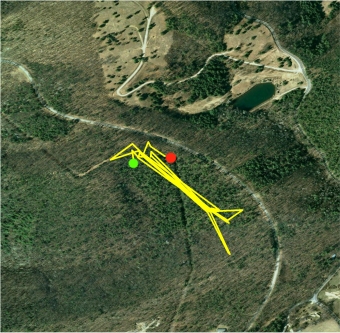Turtle M3 (Male) was found on 4/24/09 only one day before M1(F) emerged from hibernation, and only about 6 feet from M1's hibernation location.
M3 is a 485 gram male whose primary activity area is comparatively small (3.8 acres) and partly within the powerline Right-of-way (ROW), and has chosen a number of hibernation spots at the ROW edge and in the woods nearby over the years. M3 enters into hibernation on nearly the same day each fall.
Turtle M3 poses an interesting problem when interpreting tracking data: His primary activity area includes a dog-leg corner in the power line ROW, and he is often found in the woods inside the dog-leg, And many more "drop tags" are often found in the ROW itself, so he might be traveling the ROW more than the route map indicates.
1.5 miles in 2009, 43 points
0.9 miles in 2010, 26 points
1.9 mles in 2011, 38 points
1.1 miles in 2012, 26 points
2.0 miles in 2013, 41 points
1.4 miles in 2014, 34 points
2.4 miles in 2015, 50 points
2.0 miles in 2016, 59 points
2.9 miles in 2017, 60 points
1.9 miles in 2018, 41 points
1.6 miles in 2019, 37 points
2.2 miles in 2020, 44 points
4.5 miles in 2021, 71 points
3.4 miles in 2022, 57 points
2.2 miles in 2023, 40 points
3.6 miles in 2024, 52 points
M3 has never been known to cross the road. He seems particularly adept at locating other males for meetings, and females for mating. His activity area includes some very steep and rough terrain with dense vegetation. He likely mates and meets at least 3 times as often as the number observed and recorded.
